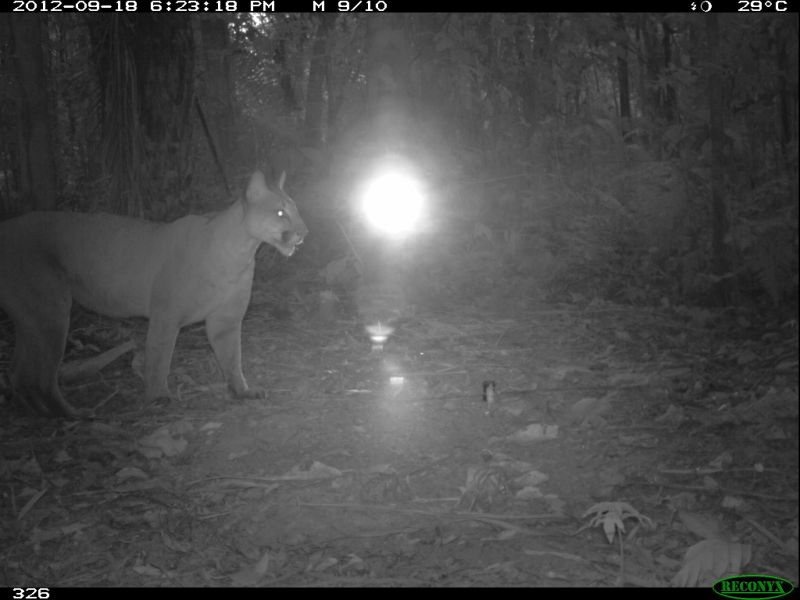Overview
This data set contains approximately 1.4M camera trap images representing around 675 species from 12 countries, making it one of the most diverse camera trap data sets available publicly. Data were provided by the Wildlife Conservation Society. The most common classes are tayassu pecari (peccary), meleagris ocellata (ocellated turkey), and bos taurus (cattle). A complete list of classes and associated image counts is available here. Approximately 50% of images are empty. We have also added approximately 375,000 bounding box annotations to approximately 300,000 of those images, which come from sequences covering almost all locations.
Sequences are inferred from timestamps, so may not strictly represent bursts. Images were labeled at a combination of image and sequence level, so – as is the case with most camera trap data sets – empty images may be labeled as non-empty (if an animal was present in one frame of a sequence but not in others). Images containing humans are referred to in metadata, but are not included in the data files.
Contact information
This data set is released under the Community Data License Agreement (permissive variant).
Data format
Annotations are provided in the COCO Camera Traps .json format used for most data sets on lila.science.
For information about mapping this dataset’s categories to a common taxonomy, see this page.
Accessing the data
Class-level annotations are available here:
Bounding box annotations are available here:
Recommended train/val/test splits are available here:
Images are available in the following cloud storage folders:
- gs://public-datasets-lila/wcs-unzipped (GCP)
- s3://us-west-2.opendata.source.coop/agentmorris/lila-wildlife/wcs-unzipped (AWS)
- https://lilawildlife.blob.core.windows.net/lila-wildlife/wcs-unzipped (Azure)
We recommend downloading images (the whole folder, or a subset of the folder) using gsutil (for GCP), aws s3 (for AWS), or AzCopy (for Azure). For more information about using gsutil, aws s3, or AzCopy, check out our guidelines for accessing images without using giant zipfiles.
If you prefer to download images via http, you can. For example, one image (with lots of birds) appears in the metadata as:
animals/0011/0009.jpg
This image can be downloaded directly from any of the following URLs (one for each cloud):
https://storage.googleapis.com/public-datasets-lila/wcs-unzipped/animals/0011/0009.jpg
https://lilawildlife.blob.core.windows.net/lila-wildlife/wcs-unzipped/animals/0011/0009.jpg
Having trouble downloading? Check out our FAQ.
Other useful links
MegaDetector results for all camera trap datasets on LILA are available here.
Information about mapping camera trap datasets to a common taxonomy is available here.

Posted by Dan Morris.